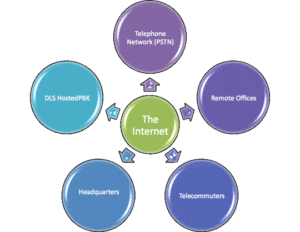Mainland Florida and the Florida Keys Brew a Storm. As summer officially winds down, people in the Northeast are trying to soak in the tailwinds of the last-minute sun, with September nearing its end. For stragglers who may have missed out on the seasonal sunbursts of July and August, this means heading to the nearest tanning salon before the leaves of autumn begin to fall. For many businesses that specialize in indoor tanning services, this means making the most out of what little time remains before having to close shop until the middle of next year. Of course, over on the West Coast, in California, and over in the Southeast, in mainland Florida and the Florida Keys, tanning is a year-long commodity enjoyed by businesses and consumers alike. Capitalizing on consistent demand for tanning services in the Northeast during the late summer months, and consistently favorable weather in the Southeast, Zoom Tan has established itself as a fixture in the markets of New York and Florida.
Although Florida hasn’t found itself gripped by the seasonality of summery weather, like over in the Northeast, it has, however, found itself gripped by the frequency at which it sees stormy weather. After Hurricane Harvey ravaged the states of Texas and Louisiana, the ‘sunshine state’ began bracing itself for the inevitable – Hurricane Irma – just the latest hurricane to hit Florida in recent year.
Emergency Support Services
As word of the storm’s approach drew and concerns mounted in the Florida Keys and mainland Florida, Zoom Tan knew that they couldn’t remain idle. In the worst-case scenario, evacuation orders would be issued, and Zoom Tan’s office headquarters based in Naples, Florida would sustain damage, finding itself without power for who knows how long. They couldn’t leave things to chance. After all, Murphy’s Law tells us that if something can go wrong, it will. And, such was the case, when Hurricane Irma deprived millions of commercial businesses and residential homes of power, with its torrential rain and wind gusts more than 80 mph.
In the immediate days following Hurricane Irma’s Category 4 landfall, the Florida Power & Light Co. forecasted normalcy for most Floridians within 2 weeks. Though insurance related to disaster recovery and relief would cover the lion’s share of ensuing damage, for many firms, this would nevertheless amount to 2-week’s worth of lost business. However, not leaving things to chance, and taking heed to Murphy’s Law, Zoom Tan did not find itself among the many to miss out. By enlisting the services of Chicago-based DLS Hosted PBX, a service provider of VoIP and VoIP PBX, Zoom Tan could keep their phone service intact with no interruptions, despite power failure having affected the local area.
Customer Responsiveness
So, what is VoIP? VoIP, or voice over Internet Protocol (IP), is a communication technology that essentially amounts to phone service over the Internet. With only a phone, a computer, an adaptor, and a broadband, high-speed Internet connection, a business can remotely transmit phone calls, fax, text, and data over Wi-Fi enabled smartphones and computers. In other words, any Internet accessible area would allow a business to maintain desk call handling, answering, and send or receive messages, irrespective of the location where the phone units are physical installed. With VoIP, you could literally become your own office, in the convenience of your own home, as you remotely access data, fax, and voice messaging service through the intranet of your physical office space.
So, what is VoIP? VoIP, or voice over Internet Protocol (IP), is a communication technology that essentially amounts to phone service over the Internet. With only a phone, a computer, an adaptor, and a broadband, high-speed Internet connection, a business can remotely transmit phone calls, fax, text, and data over Wi-Fi enabled smartphones and computers. In other words, any Internet accessible area would allow a business to maintain desk call handling, answering, and send or receive messages, irrespective of the location where the phone units are physical installed. With VoIP, you could literally become your own office, in the convenience of your own home, as you remotely access data, fax, and voice messaging service through the intranet of your physical office space.
Florida-based businesses that utilize traditional phone service have their lines of communication tethered to physical installation units. So, if the physical installation units are compromised, personnel would be unable to get in contact with clients, or conversely, have clients get in contact with them. For quality assurance in customer relationship management (CRM), businesses need to have adequate means to get in contact with their clientele. Often, this means changing with the times and adapting to newer better able communication technologies.
Inclement weather, in general, would mean having to reschedule appointments and having to put things on hold. Consumers, however, can only be expected to put their personal and professional lives on hold for a business for oh so long, before moving on to another that presents them with greater assurance that their time is of value. And, that’s where the voice over IP (VOIP) comes in – ensuring that businesses are better able to manage operations and customer support services, even in events of natural disaster.
Internet Connectivity Coordinating Call Management
Over the years, businesses have increasingly favored VoIP over traditional phone service, because of heightened functionality, cost-effectiveness, and quality assurance in call management. Whereas traditional phone services would charge a minute rate, a business wouldn’t necessarily pay more than their monthly Internet bill, when using VoIP. That being the case, VoIP service providers typically charge less than their traditional phone service counterparts, especially when only a single network has been put in use as a means of transmitting voice and data (i.e., a converged network).
In the event of natural disaster, automated attendants and call center agents may prove instrumental in easing anxieties by keeping clients in the know, coordinating schedules, and responding to queries related to accounts and payment. With traditional phone service, a business would have little choice but to use local call center agents; but depending on demographics, local call center agents may not be available. Should a business look towards offshore call center agents, they’d incur exorbitant costs because of long distance rates. In the case of VoIP, however, rates charged for long distance communication and maintenance would be minimal at best. So, maintaining a virtual call center wouldn’t be as costly. Some studies have indicated savings of up to 90% on international calls and up to 40% on local calls when traditional phone utilities have been replaced by VoIP hardware and software.
With VoIP infrastructure, real-time internal and external communication can be facilitated at little to no cost to the business itself; as the business streamlines communication among internal members of the business’ virtual team and between itself and its external clients. With desk call handling and conference call, a business can save time and money, by simultaneously transmitting information to various members of the business, all at once; rather than one at a time. With lower communication costs, a business is better positioned to realize a profit in both the short run and the long run.
Unified Communication through VoIP PBX

Given the myriad benefits associated with VoIP, it’s hard to imagine there being any shortcomings. But, some service providers, surprisingly enough, present features that are only marginally better than traditional phone lines. For example, in the event of natural disaster, when power outages are on the rise, businesses may find themselves without a working phone line and without a VoIP service provider willing and able to offer backup support to keep their lines of communication active. And, though it’s possible to transmit voice and data through a single network, conventional VoIP transmits voice and data through multiple networks. Seeing these shortcomings, service providers the likes of DLS Hosted PBX began making use of voice over Internet Protocol (VOIP) private box exchange (PBX) as one of their staple offerings.
Many of the features present in traditional VoIP as well as in traditional phone service are evident in VoIP PBX. Like traditional phone service, VoIP PBX allows for voicemail, as well as the sending and receiving of phone calls, text, and multimedia. Like traditional VoIP, VoIP PBX allows for automated greeting, video conferencing, faxing, and remote call pickup. There are, however, additional video, audio, and instant messaging features present in VoIP PBX that aren’t present in either traditional VoIP or traditional phone service. VoIP PBX through DLS Hosted PBX, for example, allows for human transcription of voicemail and recorded call, unified communication of audio, video, and data over secure, converged, data-encrypted networks, and call routing. But, the highlight of VoIP PBX is that it tends to rely on software rather than hardware.
By leveraging Internet connectivity for unified cloud storage and service, VoIP PBX ensures that business communication is geographically independent of on-site installation of PBX hardware. This helps level the playing field for small and medium-sized enterprises (SMEs), by conferring to them the same technological advantages afforded to large enterprises, for only a fraction of the cost. Additionally, in the event of an emergency, disaster recovery options allowed for by VoIP PBX through unified communication help ensure that a business’ lines of communication remain uninterrupted.
It’s easy to see why Zoom Tan and other Florida businesses have included VoIP PBX service providers such as DLS Hosted PBX, as a part of their continued present and future; as VoIP PBX and other unified communication technologies help them scale by reducing communication costs, heightening operational efficiency, and improving productivity.
